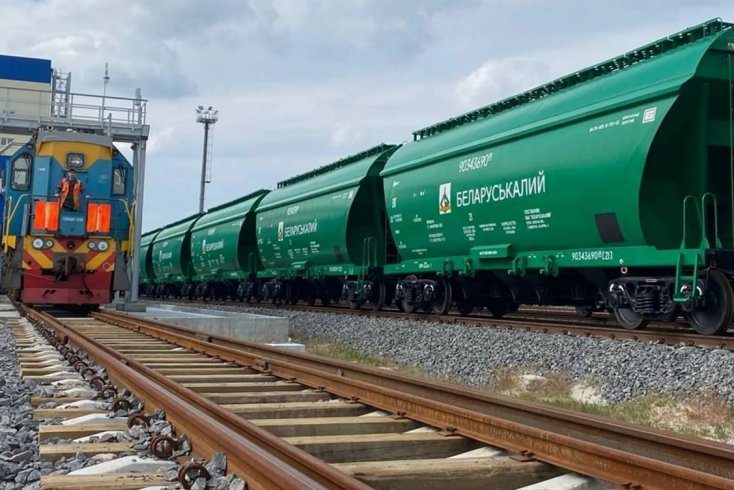As the Zapad-2025 military exercises draw closer, Belarus’ neighbors have adopted a more measured tone, playing down alarmist warnings about a potential Russian attack on a European Union country. Analysts note that the Kremlin lacks the resources for such an operation, despite its ongoing war effort in Ukraine. Russia is reportedly preparing to send only about 2,000 troops to the maneuvers.

Six months ago, the Ukrainian president told The Guardian that Moscow planned to expand its armed forces by 150,000 troops in 2025. He suggested it was “probable” that these troops would be trained in Belarus and could be used to launch an attack on Poland or Lithuania from Belarusian territory.
This week, Mindaugas Mažonas, head of Lithuania’s Second Investigation Department (AOTD), told LRT that the likelihood of hybrid attacks against Lithuania during the upcoming drills in Belarus was considered extremely low. According to him, the maneuvers in Belarus will involve around 8,000 troops in total, including 2,000 Russians.
On August 6, the Belarusian defense ministry reported the arrival of the first train carrying Russian equipment and soldiers. However, no large-scale deployment has been observed in recent weeks.
Łukašenka reluctant to step into the fray
Alaksandar Łukašenka has carefully avoided direct involvement in Russia’s war against Ukraine and is unlikely to contribute forces to a new Russian offensive, especially as international efforts to end the conflict intensify.
Unlike Russian President Vladimir Putin, who pursues imperial ambitions, the Belarusian leader shows little appetite for testing NATO’s resolve by attacking a neighboring EU state. Despite repeated requests from Moscow—including appeals for manpower even from North Korea—Putin has failed to persuade his closest ally to join the war.
With Russian forces stretched thin in Ukraine, Putin lacks the reserves for any new large-scale invasion.
Minsk may have pushed to scale down the drills
In late May, Belarusian Defense Minister Viktar Chrenin announced that Zapad-2025 would be scaled down and moved farther from NATO borders. Later, Łukašenka explained that this decision was intended to ease tensions.
The initiative to reduce the scope of the drills may have come from Minsk. Alaksandar Valfovič, state secretary of Belarus’ Security Council, disclosed on August 27 that the original plan had been to deploy forces across all training grounds in the western Brest and Hrodna regions.
Instead, the active phase will take place near Barysaŭ in central Belarus, according to Chrenin. Valfovič also noted that Collective Security Treaty Organization (CSTO) troops have already arrived at the Lasvida training ground near Viciebsk for separate exercises scheduled for August 31–September 6. Additional CSTO drills are planned at the Lepel training ground, also in the Viciebsk region.
The defense ministry has invited observers from all 56 states signatory to the Vienna Document, along with foreign journalists, to attend Zapad-2025.
Generals bristle at NATO’s response
Valfovič criticized the West for dismissing Belarus’ “peaceful initiatives.” “Our neighbors, in response to our benevolent rhetoric, have deployed a group of forces for drills at a training ground near our border. Today, more than 1,000 troops are based at the Pabrade training ground [in Lithuania], just 15 kilometers from our frontier,” he said.
His complaints appear exaggerated. A 1,000-strong contingent would be insufficient to threaten any country. Minsk is surely aware that NATO is merely taking precautions to secure its eastern flank, especially after Russia used the Union Resolve-2022 exercise as cover to build up forces in Belarus for its assault on Kyiv. At that time, the Belarusian defense ministry also insisted the drills were purely defensive.
Just days before Russian forces invaded Ukraine from Belarus in 2022, Chrenin assured his Ukrainian counterpart, Oleksii Reznikov, that no attack would come from Belarusian soil, according to Kyiv.
Unsurprisingly, Belarus’ neighbors are skeptical of its generals’ peaceful rhetoric. Their doubts deepened after Chrenin announced that Zapad-2025 will include training in nuclear weapons planning and the use of Oreshnik intermediate-range ballistic missiles.
Playing with fire
Despite efforts to project moderation, Minsk continues to play a dangerous game. Łukašenka remains determined to host nuclear weapons, while Putin leverages Belarus to threaten the West with his “wonder weapon,” the Oreshnik.




